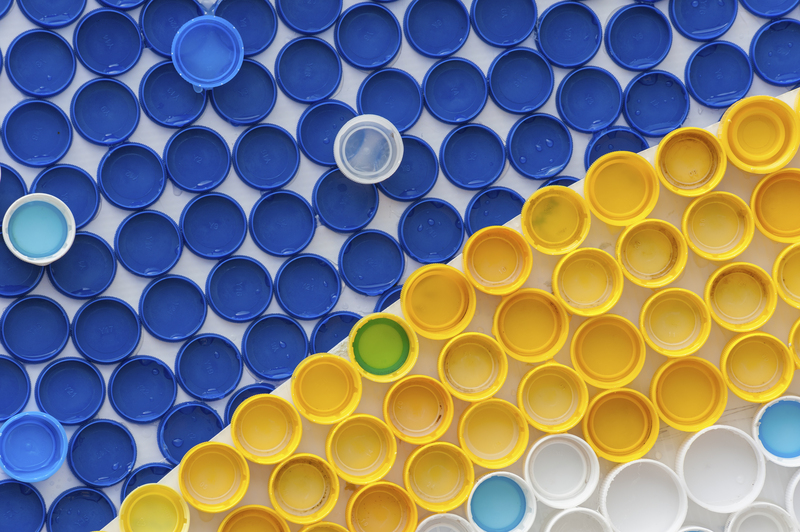Eco-Friendly Solutions for Packaging and Cardboard Disposal
In today's environmentally conscious world, businesses and consumers alike are seeking ways to reduce their environmental footprint. Packaging materials and cardboard waste make up a significant portion of landfill content worldwide. Adopting eco-friendly solutions for packaging and cardboard disposal not only helps preserve the environment but can also enhance brand reputation and consumer loyalty. This comprehensive guide explores innovative, sustainable practices for packaging, cardboard recycling, and waste minimization for both businesses and households.
Why Eco-Friendly Packaging and Cardboard Disposal Matters
Packaging plays a vital role in protecting products during transport and enhancing customer experience. However, traditional packaging materials such as plastic, polystyrene, and non-recyclable composites are major contributors to global pollution. Cardboard, while biodegradable, still presents disposal challenges due to the sheer volume generated. Embracing sustainable packaging solutions and responsible cardboard disposal methods is essential for:
- Reducing landfill waste
- Lowering greenhouse gas emissions
- Conserving natural resources
- Reducing pollution
- Complying with evolving environmental regulations
- Improving brand image among eco-aware consumers
The Environmental Cost of Traditional Packaging
Over 300 million tons of plastic are produced annually, with packaging accounting for over 40% of that total. Non-recyclable materials can remain in landfills for centuries, leaching chemicals into the soil and waterways. Even cardboard, when not properly recycled, results in wasted resources and unnecessary environmental harm.
Thankfully, there are a growing number of eco-friendly alternatives and innovative solutions to address these problems.

Innovative Eco-Friendly Packaging Solutions
1. Biodegradable and Compostable Packaging
Switching to packaging made from biodegradable or compostable materials is one of the most effective ways to address packaging waste. These options naturally break down into non-toxic components, reducing environmental impact. Examples include:
- Plant-based plastics (PLA, PHA)
- Starch-based peanuts and padding
- Mushroom packaging
- Compostable films and bags
Biodegradable packaging is especially useful for single-use applications and food-related packaging where contamination makes recycling difficult.
2. Recycled and Recyclable Materials
Utilizing recycled cardboard and paper in packaging supports the circular economy by reducing the need for virgin materials. Look for packaging labeled with a high percentage of post-consumer recycled content. Furthermore, designing recyclable packaging--free from mixed materials and coatings--ensures easy end-user disposal and higher recycling rates.
3. Minimalist and Right-Sized Packaging
Adopting a minimalist packaging approach not only reduces material usage but also shipping weight and costs. Right-sized packaging eliminates unnecessary void fill and oversized boxes, further preventing resource waste. Use software solutions to optimize packaging dimensions for each product.
4. Reusable Packaging Systems
For businesses with repeat customers, reusable packaging solutions--such as returnable totes, crates, or refillable containers--can significantly reduce waste. Encourage customers to return packaging via incentives or deposit systems. This is particularly effective for e-commerce, meal kits, and bulk delivery sectors.
5. Water-Based Inks and Adhesives
Traditional inks and glues contain harmful chemicals that hinder recyclability and may pose health risks. By switching to water-based, soy-based, or vegetable-based inks and non-toxic adhesives, businesses ensure that eco-friendly packaging can be easily recycled or composted at the end of its life.
Cardboard Disposal: Eco-Conscious Practices for Businesses and Households
Even with the most sustainable packaging, responsible cardboard disposal remains essential. Here are comprehensive tips and strategies for minimizing the environmental impact of cardboard waste:
1. Proper Cardboard Recycling Methods
- Flatten boxes to save space and make collection easier.
- Remove tape, labels, and non-paper packing materials if required by local recycling guidelines.
- Avoid contaminating cardboard with food, grease, or liquids.
- Sort cardboard from other recyclables if single-stream recycling is not available.
- Stay informed about local recycling programs and drop-off points.
Did you know: Recycling a single ton of cardboard saves over 9 cubic yards of landfill space and 46 gallons of oil?
2. Creative Cardboard Reuse Ideas
Reduce, reuse, recycle--the classic eco-mantra also applies to cardboard. Here are just a few ways you can extend the life of your used boxes:
- Use for storage and organization around the home or office
- Repurpose as arts and crafts materials for kids and adults
- Compost clean, shredded cardboard as a carbon-rich "brown" material in garden compost
- Offer excess boxes online to movers, crafters, or local businesses
- Utilize as weed barriers in gardening or landscaping
Every box reused is a step toward reducing our collective waste footprint.
3. Bulk Collection Services and Commercial Recycling
For organizations and large apartment complexes, partnering with bulk cardboard recycling services ensures that waste materials are regularly collected, sorted, and routed to appropriate recycling facilities. Some recycling partners even provide compactors or balers, making pickup more efficient and profitable.
4. Composting Cardboard
Corrugated cardboard, free from coatings or hazardous inks, can be composted with food scraps and yard waste. Shredded cardboard improves aeration, moisture retention, and microbial activity in compost piles. However, avoid composting glossy or heavily printed cardboard, as these may contain chemicals or plastic coatings.
Eco-Friendly Innovations in Packaging Technology
1. Edible Packaging
Cutting-edge companies are developing edible packaging made from seaweed, rice, or potato starch. These can eliminate packaging waste altogether, especially for single-serve food products, and cater to zero-waste goals.
2. Smart Packaging
Technologies such as QR codes and RFID tags are enabling traceability of packaging materials, supporting more effective recycling and reuse loops. Smart packaging can provide consumers with disposal instructions or track the environmental impact of their purchases.
3. Eco-Friendly Cushioning Materials
Clamshells, wraps, and fillers made from materials like mushroom mycelium, corn starch, or recycled paper are replacing traditional foam and bubble wrap. These materials decompose naturally and can often be composted with organic waste.
Guidelines for Businesses: Implementing Sustainable Packaging and Disposal
- Conduct a packaging audit to identify wasteful practices and opportunities for improvement.
- Engage suppliers who offer eco-friendly packaging materials and transparent supply chains.
- Communicate your sustainability initiatives to customers and encourage responsible disposal.
- Train staff on proper cardboard recycling and waste minimization strategies.
- Monitor performance and set measurable sustainability goals.
- Seek third-party certifications such as FSC (Forest Stewardship Council) or Cradle to Cradle for greater credibility.
Benefits to Business
Adopting eco-friendly packaging and responsible cardboard disposal delivers tangible advantages, including:
- Lower waste disposal costs
- Reduced regulatory risk
- Enhanced corporate reputation
- Greater appeal to environmentally conscious consumers
- Improved customer retention

How Individuals Can Support Eco-Friendly Packaging and Cardboard Disposal
Change begins at home! Here are simple yet effective actions you can take:
- Choose products with minimal, recyclable, or compostable packaging
- Re-use cardboard boxes wherever possible
- Recycle all clean cardboard according to your area's regulations
- Compost shredded cardboard to enrich your garden soil
- Advocate for responsible packaging from your favorite brands
Educate and Influence
Spread the word: Educate friends, family, and neighbors about the environmental benefits of eco-friendly packaging and proper cardboard disposal. Your actions can have a ripple effect in the broader community.
Conclusion: The Future of Sustainable Packaging and Cardboard Waste Management
The rapid growth of e-commerce and convenience shopping has increased the need for sustainable solutions for packaging and cardboard disposal. By embracing eco-friendly alternatives, rethinking how we package and dispose of materials, and prioritizing sustainability at every level, we can dramatically lower the environmental impact of our everyday choices.
With commitment and innovation, both individuals and organizations can help create a cleaner, greener planet--one box at a time.
Discover More
Interested in learning more? Explore the latest eco-friendly packaging products, recycling resources, and practical guides to help your home or business go green. Remember, every small step today leads to a more sustainable tomorrow!